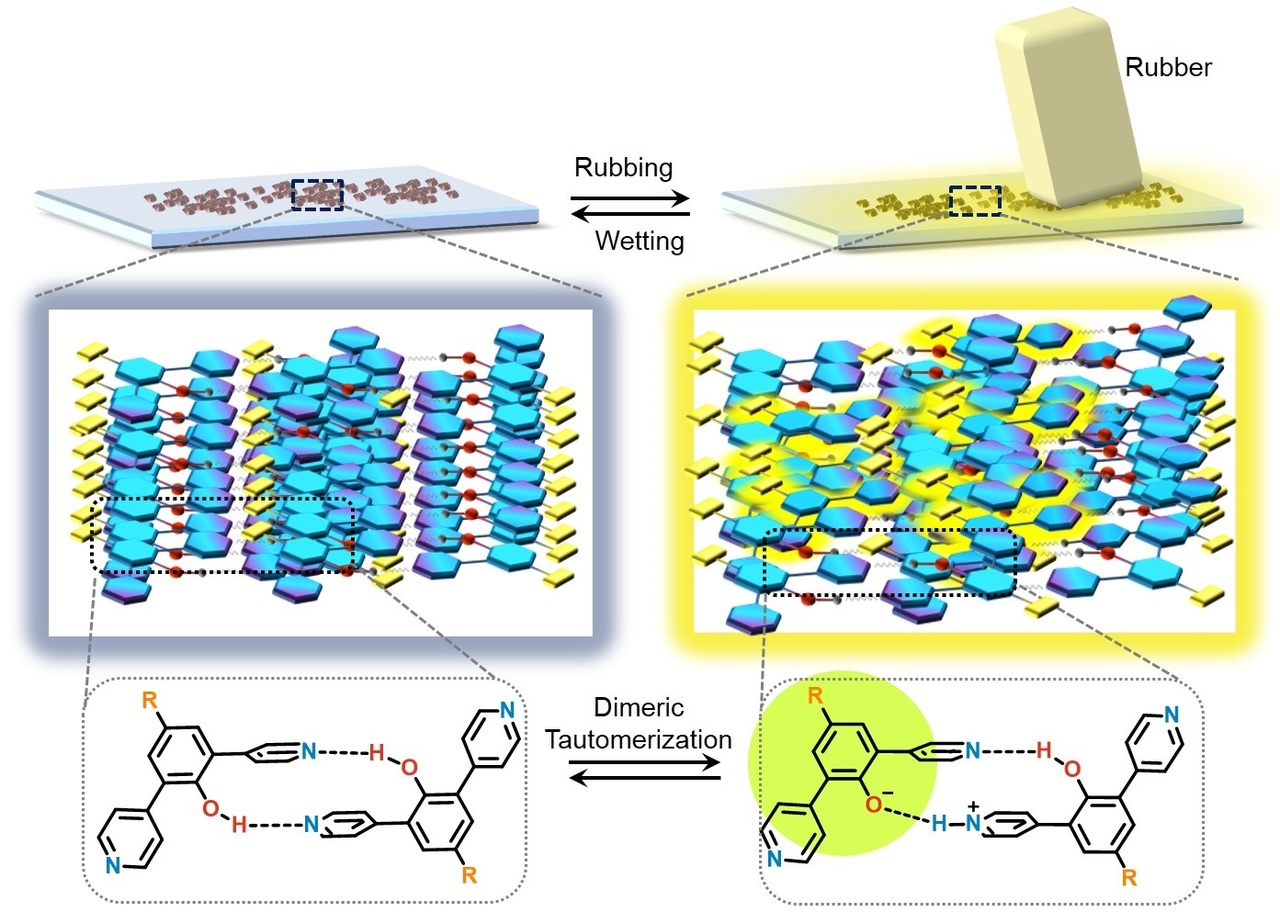Relative to solution, it is generally more difficult to obtain response to external stimuli in the solid state. Therefore, it is challenging but quite desirable to develop green and high-efficient strategies to regulate solid-state structures and the related material properties. Employing ortho-pyridinil phenol as a prototype, in this work, Zhu's group at Fudan University show an unprecedented rubbing-induced photoluminescence that can be straightforwardly achieved in the solid state. This rubbing response was based on an accurately designed topochemical tautomerism, where a negative charge, exactly provided by the triboelectric effect of a rubber, was able to induce the proton transfer in a double H-bonded dimeric structure. This process led to a bright-form tautomer that can be stabilized in the solid-state settings, thus to light up the materials. The significance of the work is as following:
1) Only rubber can cause such a solid-state topochemical tautomerism, featuring the material choice is selective but still common.
2) The rubbing response is instantaneous and can be quantitatively controlled without additive accumulation, leading to an up to over 450-fold increase of the fluorescent quantum yield of the materials.
3) The topochemical tautomerism is reversible, allowing a repeated use of the material property.
4) A further modification on the double H-bonded dimeric structure can be accessed, thus to incorporate more different material properties and functions.
It is believed that this work will be a significant contribution to the fields of chemical methodology and smart-material manufacturing. The related paper has been published in Nature Communications, with Mr. Zhongyu Li in the group as the first author.
Zhongyu Li, Yanjie Wang, Gleb Baryshnikov, Shen Shen, Man Zhang, Qi Zou, Hans Ågren, Liangliang Zhu*, Lighting up Solid States Using a Rubber, Nat. Commun. 2021, 12, 908




Please sign in or register for FREE
If you are a registered user on Research Communities by Springer Nature, please sign in